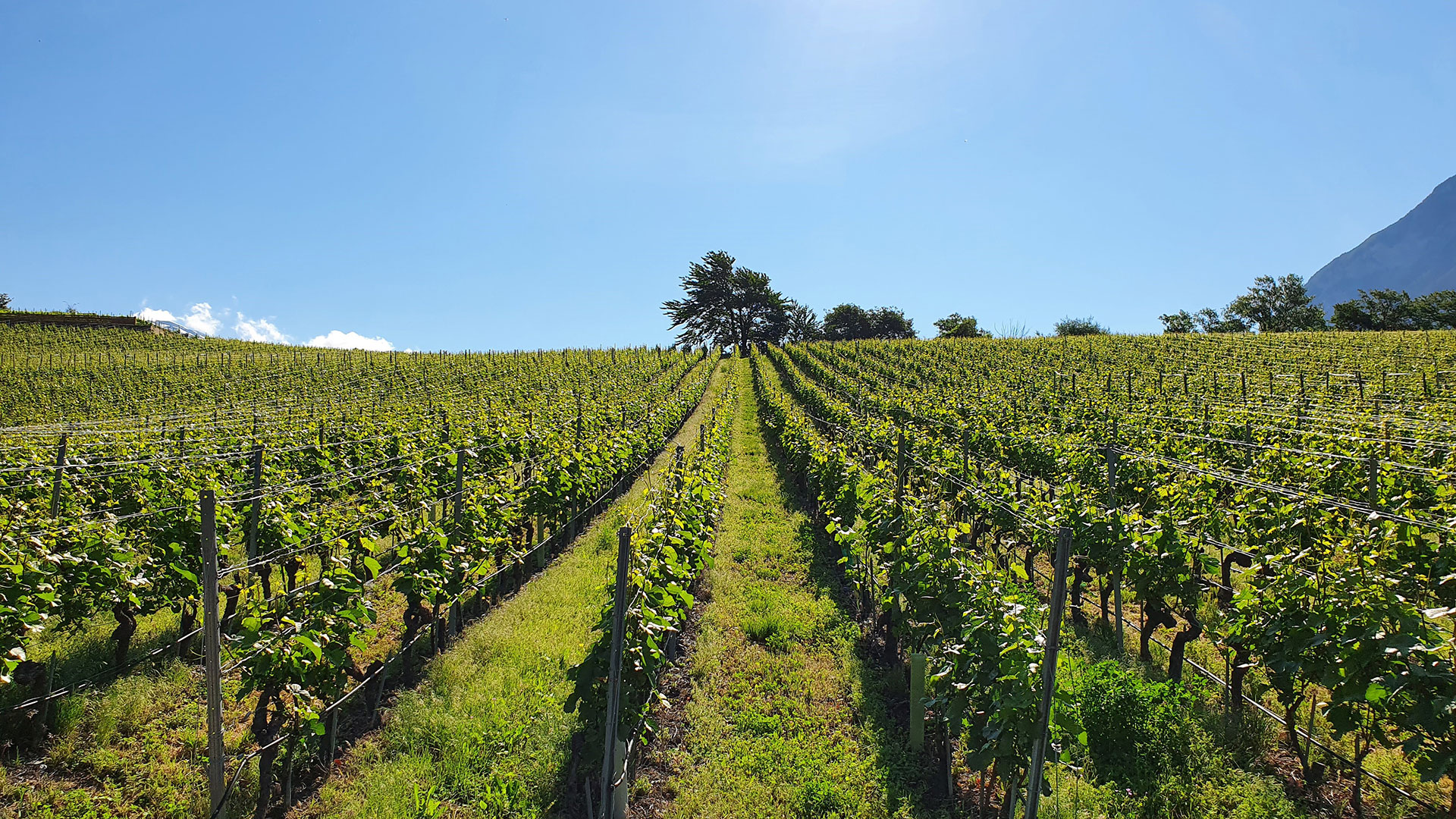Introduction to the Valais wine region
The Valais wine region is the largest and also one of the best-known wine-growing regions in Switzerland. With a vineyard area of around 4,800 to 5,000 hectares, it accounts for almost a third of the entire Swiss vineyard area. The canton of Valais combines a variety of sites, grape varieties and soils that are characterized by the Rhone and the steep slopes of the Rhone Valley.
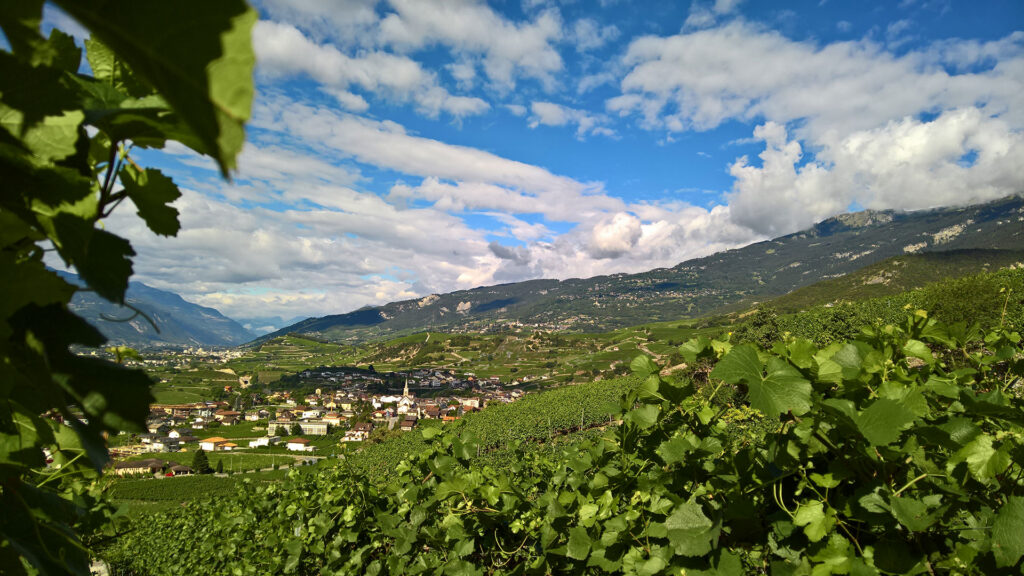
The vineyards stretch from Brig in the east to Martigny in the west. Lower Valais, which opens up towards Vaud, differs significantly from Upper Valais in terms of climate and landscape. This diversity of regions, soils and climatic conditions makes Valais one of the most exciting wine-growing regions in Europe.
Climate and conditions for viticulture
Valais benefits from a special steppe climate. Over 2,000 hours of sunshine per year and comparatively little rain – often only 600 to 800 millimetres – create ideal conditions for viticulture. A decisive factor is the Föhn, a warm and dry wind that dries the vines quickly in the valley and minimizes the risk of disease.
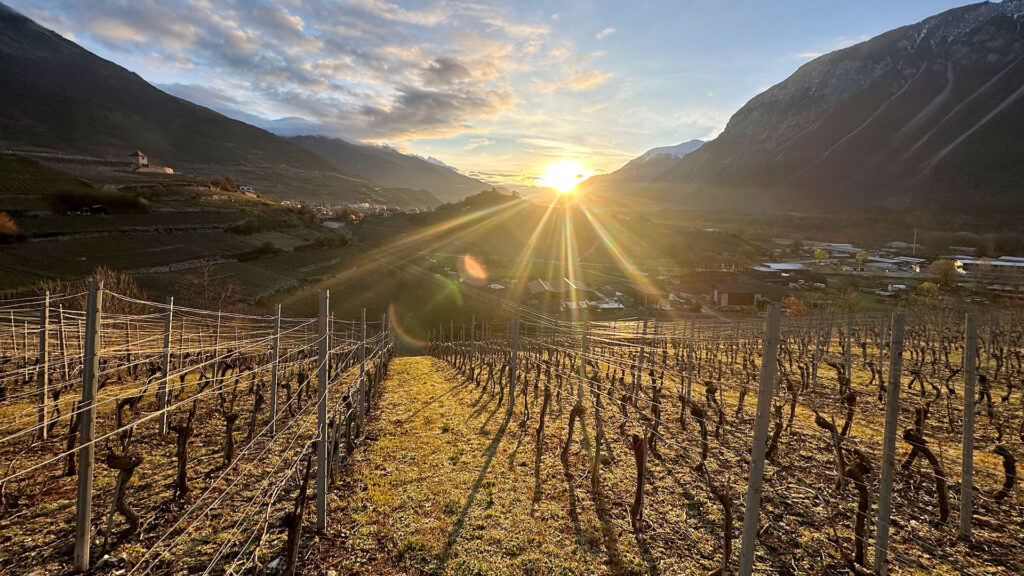
The vineyards are located at altitudes between 450 and 1,100 meters above sea level. The higher locations in particular, for example near Visperterminen, are unique in the world. Here, the vines grow on steep terraces supported by dry stone walls, making cultivation laborious but rewarding.
Soils and terroirs
The geological conditions in Valais are extremely varied. Limestone, slate, granite, marl, alluvial soils and slate soils alternate and characterize the wines in an individual way. Sandy sites produce light, fresh wines, while heavy limestone and marl soils produce powerful, structured wines.
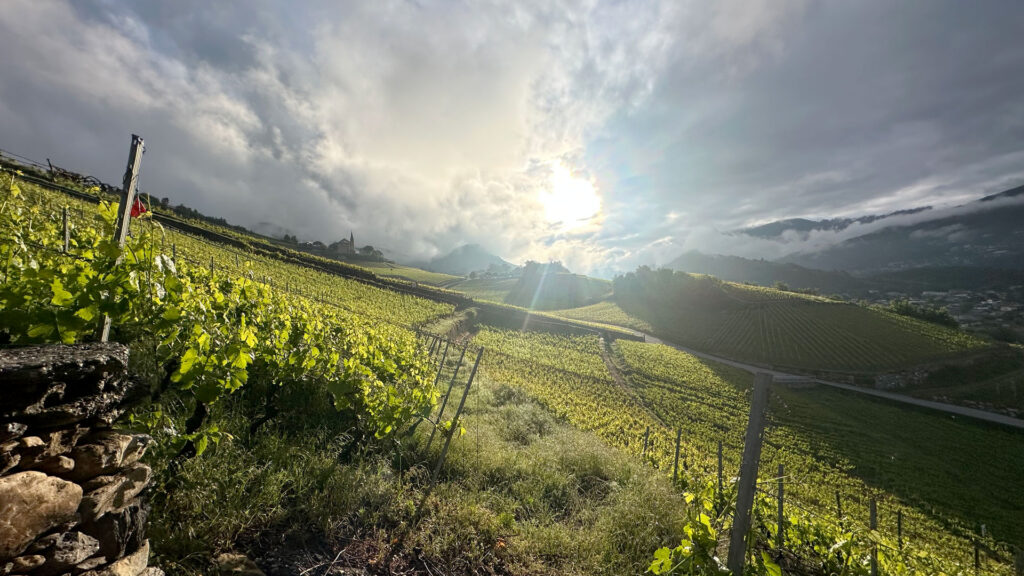
This diversity of soils is one of the reasons why the region produces such a large number of grape varieties. Each site reflects its own terroir and gives the wines a distinctive character.
History of viticulture in Valais
Viticulture in Valais dates back to the Iron Age. Findings indicate that vines were already being cultivated in the valley before the Roman conquest. The Romans brought new grape varieties and knowledge of winemaking to the region.
In the Middle Ages, monasteries and noble families promoted viticulture. Terraced slopes, as can still be found in the Rhone Valley today, were created during this period. The modern era brought an expansion of the vineyards with the Rhone correction and new irrigation systems. Today, Valais is considered a modern wine-growing region that combines tradition with innovation and carefully protects its AOC areas.
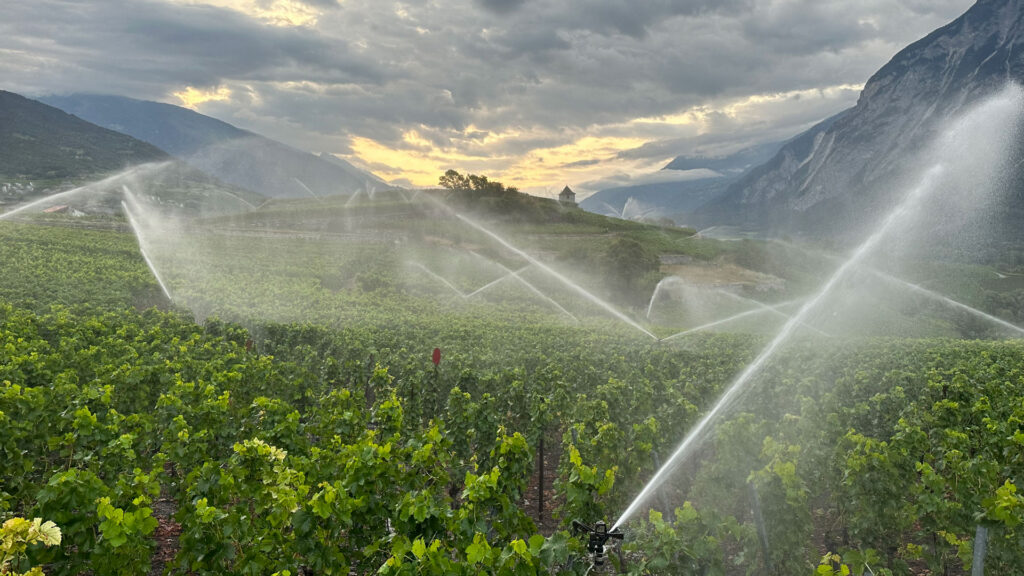
Varietal diversity – the strength of Valais
The Valais wine region is known for its enormous diversity of varieties. Around 50 grape varieties are officially approved, including a considerable number of indigenous specialties that can only be found here.
- Red grape varieties make up around 58% of the vineyard area. These include Pinot Noir, Gamay, Cornalin and Humagne Rouge.
- White grape varieties account for around 42%. Chasselas (called Fendant in Valais), Petite Arvine, Heida (Savagnin Blanc) and Amigne are prominent examples.
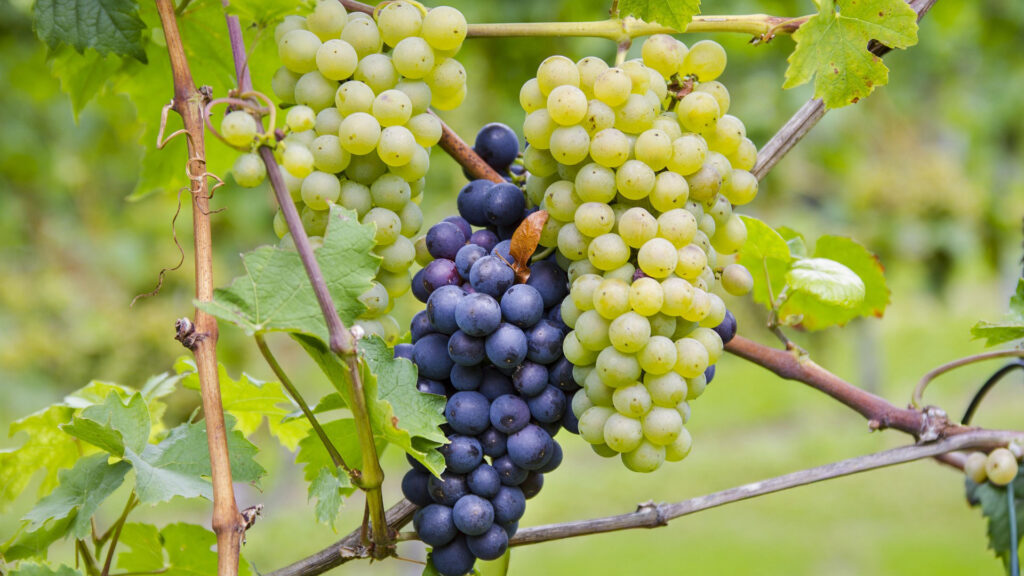
This diversity makes it possible to produce both light everyday wines and complex single-vineyard wines of international stature.
Pinot Noir – red wine with elegance
Pinot Noir is the most important red grape variety in Valais. With great adaptability, it thrives at different altitudes and produces elegant, fruity wines with fine tannins. In the lower Valais in particular, Pinot Noir wines show ripe fruit and a clear structure, while they appear lighter and fresher at higher altitudes.
Pinot Noir, as it is often called in Switzerland, has shaped the region for centuries and stands for both tradition and modernity in Valais viticulture.
Humagne Rouge – rustic and full of character
Humagne Rouge is an indigenous red wine variety from Valais. It produces dark, powerful wines with distinctive tannins and aromas of wild berries, leather and spices. Its character is considered original and rustic, which makes it a true Valais specialty wine.
The variety is demanding to grow and requires poor soils and good locations. However, if the conditions are right, Humagne Rouge produces wines of remarkable depth and ageing potential.
Petite Arvine – white wine with citrus notes
Petite Arvine is a white grape that is considered the region’s flagship. It produces fresh, elegant white wines that are characterized by aromas of grapefruit, salt and citrus. A fine minerality is typical, which comes from the limestone and slate soils on which the vines thrive.
This wine is an excellent accompaniment to fish and seafood and is considered one of the finest white wines in Switzerland. Its origins are firmly rooted in the Valais, even though similar grape varieties are now finding favor internationally.
Savagnin Blanc – also known as Heida
Savagnin Blanc, traditionally called Heida in Valais, is an old white grape variety that is mainly cultivated at high altitudes. It finds ideal conditions particularly around Visperterminen, the highest vineyard in Europe.
The wines made from Savagnin Blanc are characterized by strength, spice and an impressive ageing potential. Typical aromas are quince, nuts and exotic fruits. The combination of altitude, poor soils and steppe climate gives this wine a special radiance.
Other specialties of the Valais
In addition to the great varieties, it is the regional specialties that make Valais so special. Cornalin, also known as Rouge du Pays, produces elegant and deep red wines. Amigne, a white variety, produces a wide range of wines, from dry to sweet. Syrah, originally from the Rhone Valley in France, also feels at home in Valais and produces powerful red wines with an international reputation.
AOC and quality assurance
The AOC (Appellation d’Origine Contrôlée) is strictly regulated in Valais. It guarantees the origin, varietal composition and quality of the wines. Each region, from the Upper Valais to the Lower Valais, has its own characteristics, which are protected and preserved by the AOC system.
This ensures that the wines retain their typical regional expression and at the same time meet the high quality demands of consumers.
Wine and cuisine – a close connection
The cuisine of Valais is varied and characterized by regional products.
- Chasselas goes well with cheese dishes such as raclette or fondue.
- Petite Arvine is an excellent accompaniment to fish dishes or light starters.
- Pinot Noir harmonizes with veal or poultry.
- Humagne Rouge or Cornalin are ideal partners for game, lamb or braised dishes.
These combinations show how closely linked wine and food are in Valais.
Frequently asked questions (FAQ) about the Valais wine region
Which grape varieties are typical of Valais?
Valais is dominated by Pinot Noir, Chasselas (Fendant), Gamay and a number of indigenous varieties such as Humagne Rouge, Petite Arvine, Cornalin and Savagnin Blanc. This diversity makes the region unique.
How does the climate influence viticulture in Valais?
The dry steppe climate with plenty of sunshine, little rain and the foehn creates ideal conditions. The vines remain healthy, the grapes ripen evenly and produce concentrated aromas.
What does AOC mean in connection with Valais wines?
AOC is the controlled designation of origin. It regulates varieties, locations and quality standards in order to ensure the uniqueness and authenticity of wines from Valais.
Which dishes go well with Valais wines?
Chasselas goes well with cheese dishes, Petite Arvine with fish, Pinot Noir with veal and Humagne Rouge with strong meat dishes. The variety of wines allows numerous combinations.
Are there wine hikes in Valais?
Yes, Valais offers many wine trails. Routes through the Lavaux-like Lower Valais or to the vineyard terraces of Visperterminen, where you can enjoy the landscape and wines in equal measure, are particularly popular.

